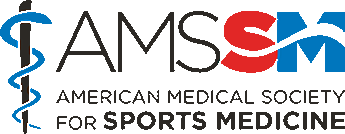 What is it? Bursa are thin, fluid-filled sacs located throughout the body that cushion the bones, tendons and muscles near joints. The olecranon is the pointy bone at the back of the elbow, and the olecranon bursa lies between the skin and the olecranon. Bursitis occurs when the bursa becomes irritated or inflamed, and more fluid accumulates in the bursa. Olecranon bursitis may be caused by an injury from hitting the point of the elbow. It can also be caused by overuse of the elbow or prolonged and repetitive pressure on the elbow, such as from resting it on a hard surface for long periods of time. Because the olecranon bursa is so close to the surface of the skin, it can easily become infected from an injury like a cut to the skin over the olecranon. Medical conditions, such as rheumatoid arthritis and gout, may also put someone at risk for developing olecranon bursitis.
Symptoms/Risks • Swelling on the back of the elbow. • Pain over the olecranon. • Restricted elbow range of motion may occur if there is significant swelling. • If the bursa is infected, the area may be tender, red, and warm. Fever is also possible. • An infected bursa can also break open spontaneously and drain pus.
Sports Medicine Evaluation & Treatment A sports medicine physician will review the patient’s symptoms and medical history, and then examine the affected arm and elbow. The doctor may recommend an x-ray to look for a foreign body or a bone spur. Bone spurs are often found on the tip of the olecranon in patients who have had repeated instances of elbow bursitis. The doctor may choose to take a small sample of bursa fluid with a needle to diagnose whether the bursitis is caused by infection or gout. Nonsurgical treatment includes avoiding activities that cause direct pressure to the elbow, wearing elbow pads to cushion the elbow, applying ice and taking oral anti-inflammatory medications to reduce swelling. If swelling and pain do not respond to these treatments, the doctor may recommend draining the fluid from the bursa with a needle aspiration. Sometimes a steroid, which is a strong anti-inflammatory medication, is injected into the bursa. Corticosteroid injections usually work well to relieve pain and swelling. However, symptoms can return and this should only be done if the doctor is sure there is not an infection. If the doctor suspects that the bursitis is due to an infection, he or she may recommend draining the fluid from the bursa with a needle aspiration. The removal of fluid helps relieve symptoms and gives the doctor a sample to send for laboratory analysis to identify if any bacteria are growing. This also helps the doctor choose the best antibiotic to fight the infection. Sometimes the bursa is removed with surgery if the infection cannot be cleared with antibiotics, or if the bursitis keeps returning. The bursa usually grows back as a non-inflamed, normally functioning bursa over a period of several months after surgery.
Injury Prevention A compression elbow sleeve may help prevent fluid from reaccumulating after aspiration. However, applying excessive pressure over the elbow should be avoided. Avoiding trauma to the olecranon bursa is also important for recovery, as well as preventing recurrence. Consider use of elbow pads to cushion the elbow.
Return to Play An athlete may return to play without restrictions after symptoms have resolved. The athlete should exhibit full range of motion and near normal strength and be able to perform sports-specific drills without a recurrence of symptoms. If surgery is required, the doctor will apply a splint to the arm after the procedure to protect the skin. Although formal physical therapy after surgery is not usually needed, the doctor may recommend specific exercises to improve range of motion. These are typically permitted within a few days of the surgery. The skin should heal within 10 to 14 days after the surgery, and after 3 to 4 weeks the doctor may allow you to fully use your elbow. AMSSM Member Authors References Category: Elbow, Overuse Injuries, [Back] |

